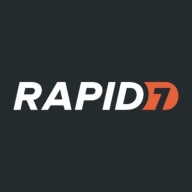


IBM Spectrum Computing and Rapid7 InsightCloudSec are competing in the areas of high-performance computing and cloud security solutions, respectively. Rapid7 InsightCloudSec holds the upper hand with its advanced security features, despite its higher cost, while IBM Spectrum Computing is favored for its pricing and comprehensive support.
Features: IBM Spectrum Computing is recognized for high-performance computing, workload scheduling, and data management. Rapid7 InsightCloudSec excels in cloud security, providing comprehensive management tools, automated response, and threat detection.
Room for Improvement: IBM Spectrum Computing could enhance its cloud-native capabilities, simplify user interfaces, and improve scalability. Rapid7 InsightCloudSec might benefit from cost reduction, expanded real-time threat detection capabilities, and enhanced user training resources.
Ease of Deployment and Customer Service: IBM Spectrum Computing uses a traditional deployment model suitable for enterprise environments, offering strong personalized customer support. Rapid7 InsightCloudSec focuses on cloud-native solutions, providing seamless integration with reliable customer service, emphasizing ease of integration and scalability.
Pricing and ROI: IBM Spectrum Computing is noted for its competitive pricing and clear ROI, appealing to cost-conscious enterprises. Rapid7 InsightCloud Sec, despite higher upfront fees, presents considerable value with its robust security features, particularly for organizations prioritizing cloud security.



IBM Turbonomic offers automation, planning, and right-sizing recommendations to streamline resource management, improve efficiencies, and optimize costs across virtualized environments and cloud platforms.
IBM Turbonomic is valued for its capability to optimize resource allocation and monitor virtual environments efficiently. It facilitates automated decision-making in VM sizing, load balancing, and cost optimization for both on-premises and cloud deployments. Users can leverage insights for workload placement, ensure peak performance assurance, and effectively right-size across VMware and Azure. The ongoing transition to HTML5 aims to improve visual and navigational ease, while expanded reporting features are anticipated. Opportunities for improved training, documentation, and integrations enhance platform usability and functionality.
What Are the Key Features?In finance, IBM Turbonomic aids in maintaining platform efficiency during market fluctuations. Healthcare organizations leverage its capability for resource optimization during high-demand periods to enhance patient care support. Retailers use it for planning in peak seasons, ensuring resources align with fluctuating demand to maintain performance continuity.
IBM Spectrum Computing uses intelligent workload and policy-driven resource management to optimize resources across the data center, on premises and in the cloud. Now up to 150X faster and scalable to over 160,000 cores, IBM provides you with the latest advances in software-defined infrastructure to help you unleash the power of your distributed mission-critical high performance computing (HPC), analytics and big data applications as well as a new generation open source frameworks such as Hadoop and Spark.
Rapid7 InsightCloudSec is a comprehensive CSPM tool catering to cloud security across Docker and Kubernetes workloads, ensuring rigorous data classification and protection, focusing on AWS and Azure platforms.
Organizations leverage Rapid7 InsightCloudSec for securing cloud environments, integrating smoothly into Kubernetes settings for extensive security oversight. This tool addresses data protection with governance and access controls, providing centralized visibility and alert mechanisms. Users depend on its threat detection capabilities, easing data security management on AWS and Azure. The platform integrates automated processes and agentless scanning to foster an understanding of cloud security dynamics. Enhancements in CNAPP management and more intuitive interfaces could further streamline its use.
What are the most important features of Rapid7 InsightCloudSec?In financial sectors, Rapid7 InsightCloudSec is critical for safeguarding sensitive information and ensuring compliance. Healthcare industries use it to protect patient data, adhering to strict regulatory standards. E-commerce businesses appreciate its ability to secure transaction data while maintaining service availability through reliable threat detection and mitigation strategies.
We monitor all Cloud Management reviews to prevent fraudulent reviews and keep review quality high. We do not post reviews by company employees or direct competitors. We validate each review for authenticity via cross-reference with LinkedIn, and personal follow-up with the reviewer when necessary.